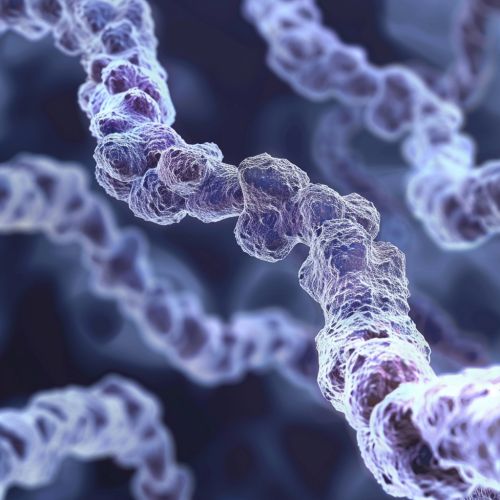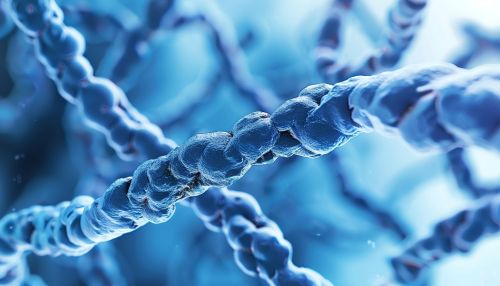End Replication Problem
Introduction
The end replication problem is a fundamental issue in molecular biology and genetics, specifically related to the replication of linear chromosomal DNA in eukaryotic cells. This problem arises because the DNA polymerase enzyme, which is responsible for DNA synthesis, cannot fully replicate the ends of linear chromosomes. This results in the progressive shortening of chromosomes with each cell division, which has significant implications for cellular senescence, aging, and cancer.
Mechanism of DNA Replication
DNA replication is a highly coordinated process involving multiple enzymes and proteins. The primary enzyme responsible for DNA synthesis is DNA polymerase, which adds nucleotides to the growing DNA strand in a 5' to 3' direction. However, DNA polymerase cannot initiate DNA synthesis de novo; it requires a short RNA primer synthesized by primase to provide a starting point.
During replication, the leading strand is synthesized continuously, while the lagging strand is synthesized discontinuously in short fragments known as Okazaki fragments. These fragments are later joined together by DNA ligase. The problem arises at the very ends of the chromosomes, known as telomeres, where the RNA primer used for the final Okazaki fragment cannot be replaced with DNA, leading to an incomplete replication of the chromosome ends.
Telomeres and Telomerase
Telomeres are repetitive nucleotide sequences at the ends of linear chromosomes that protect the chromosome from degradation and prevent the loss of essential genetic information. In most eukaryotic cells, telomeres consist of tandem repeats of a simple sequence, such as TTAGGG in humans.
The enzyme telomerase plays a crucial role in counteracting the end replication problem. Telomerase is a ribonucleoprotein complex that includes an RNA component, which serves as a template for the addition of telomeric repeats, and a protein component with reverse transcriptase activity. By extending the telomeres, telomerase helps maintain chromosome integrity and length.
Implications for Cellular Aging
The progressive shortening of telomeres with each cell division is a key factor in cellular senescence, a state of irreversible growth arrest that cells enter after a certain number of divisions. This phenomenon, known as the Hayflick limit, is believed to be a mechanism to prevent the proliferation of damaged cells and reduce the risk of cancer.
However, telomere shortening is also associated with aging and age-related diseases. As telomeres shorten, cells lose their ability to divide and function properly, leading to tissue degeneration and the onset of age-related conditions such as osteoporosis, cardiovascular diseases, and neurodegenerative diseases.
Telomere Shortening and Cancer
While telomere shortening acts as a barrier to unlimited cell division, cancer cells often bypass this barrier by activating telomerase or alternative lengthening of telomeres (ALT) mechanisms. Approximately 85-90% of human cancers exhibit telomerase activity, which allows them to maintain telomere length and continue dividing indefinitely.
The activation of telomerase in cancer cells is a double-edged sword. On one hand, it enables the uncontrolled proliferation of cancer cells; on the other hand, it presents a potential target for cancer therapy. Inhibiting telomerase activity in cancer cells could limit their ability to maintain telomeres, leading to cell death and tumor regression.
Experimental Approaches and Therapeutic Implications
Research on the end replication problem and telomere biology has led to several experimental approaches and potential therapeutic strategies. These include:
- **Telomerase Inhibitors:** Small molecules and antisense oligonucleotides that inhibit telomerase activity are being explored as potential cancer therapies. By targeting telomerase, these inhibitors aim to induce telomere shortening and limit the proliferative capacity of cancer cells.
- **Telomere Extension:** Strategies to extend telomeres in normal cells are being investigated as potential treatments for age-related diseases and conditions associated with premature telomere shortening, such as dyskeratosis congenita.
- **Gene Editing:** Techniques such as CRISPR-Cas9 are being used to study the regulation of telomere length and the role of telomerase in cellular processes. These tools also hold promise for developing gene therapies to address telomere-related disorders.
Conclusion
The end replication problem is a critical aspect of DNA replication in eukaryotic cells, with significant implications for cellular aging, cancer, and age-related diseases. Understanding the mechanisms underlying telomere maintenance and the role of telomerase provides valuable insights into the biology of aging and cancer, as well as potential therapeutic targets for treating these conditions.
See Also


